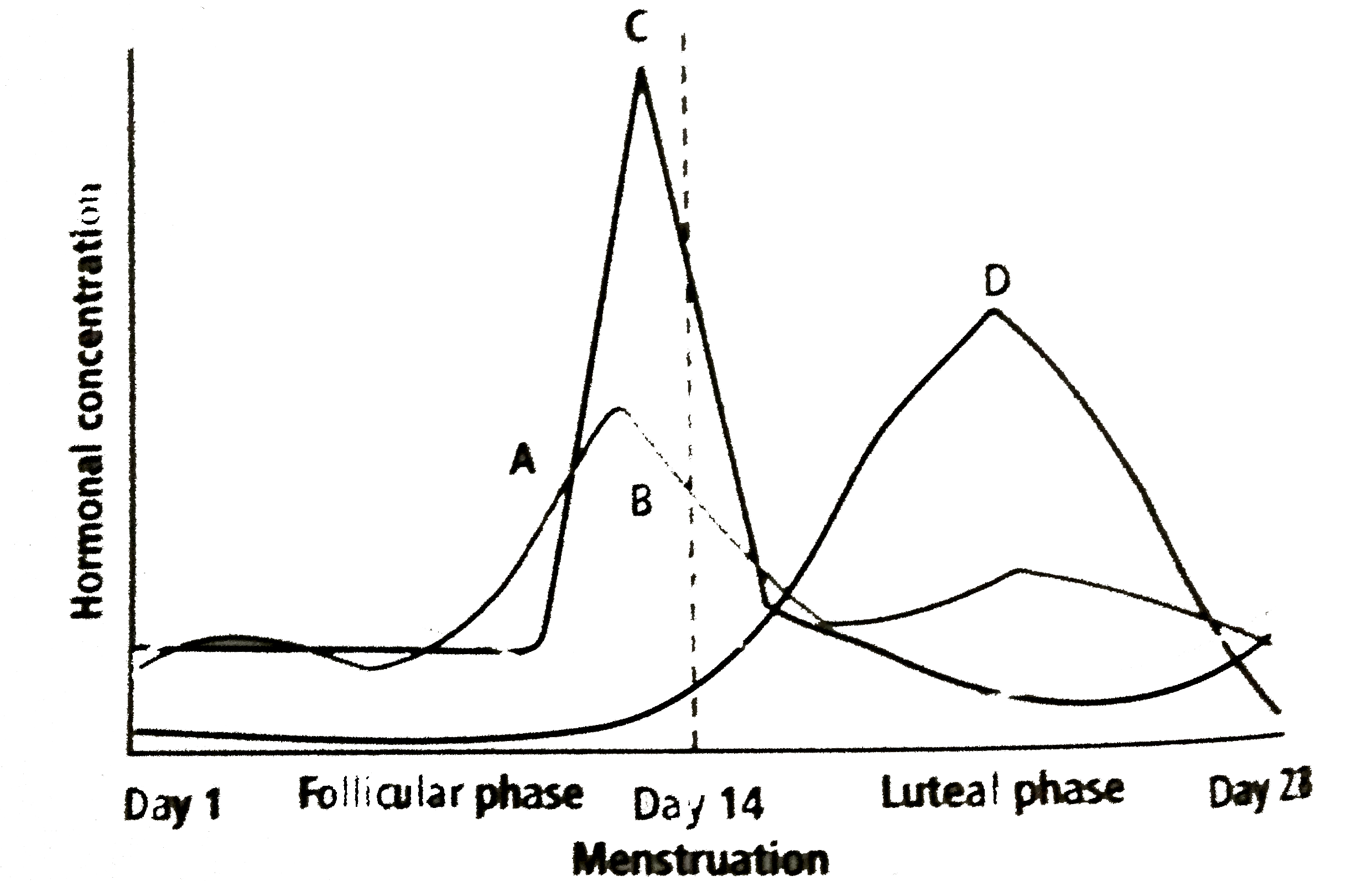During menstrual cycle there is morphological and physiological change in :
A. Uterus
B. Ovary
C. Penis
D. Labia majora
A, B
A, B, C
C, D
A, B, C, D
The correct Answer is:A
To answer the question regarding the morphological and physiological changes during the menstrual cycle, we will analyze each option provided.
1. Understanding the Menstrual Cycle:
- The menstrual cycle is a monthly series of changes that a woman's body goes through in preparation for the possibility of pregnancy. It typically lasts about 28 days.
2. Identifying the Key Organs:
- The primary organs involved in the menstrual cycle are the uterus and the ovaries. The uterus is where a fertilized egg would implant and develop, while the ovaries produce eggs and hormones.
3. Analyzing Each Option:
- Option A: Uterus:
- During the menstrual cycle, the endometrium (the inner lining of the uterus) undergoes significant changes. It thickens in preparation for a potential pregnancy and breaks down during menstruation if fertilization does not occur. This indicates both morphological (structural) and physiological (functional) changes.
- Option B: Ovary:
- The ovaries also experience changes during the menstrual cycle. They release hormones such as estrogen and progesterone and undergo changes related to the maturation and release of eggs (ovulation). This also indicates both morphological and physiological changes.
- Option C: Penis:
- The penis is part of the male reproductive system and does not undergo changes during the menstrual cycle, which is specific to females.
- Option D: Labia Majora:
- The labia majora are part of the external female genitalia. They do not undergo significant morphological or physiological changes during the menstrual cycle.
4. Conclusion:
- Based on the analysis, the organs that undergo morphological and physiological changes during the menstrual cycle are the uterus (Option A) and the ovaries (Option B). Therefore, the correct answer is both A and B.
Final Answer:
A. Uterus and B. Ovary undergo morphological and physiological changes during the menstrual cycle.
- The menstrual cycle is a monthly series of changes that a woman's body goes through in preparation for the possibility of pregnancy. It typically lasts about 28 days.
- The primary organs involved in the menstrual cycle are the uterus and the ovaries. The uterus is where a fertilized egg would implant and develop, while the ovaries produce eggs and hormones.
- Option A: Uterus:
- During the menstrual cycle, the endometrium (the inner lining of the uterus) undergoes significant changes. It thickens in preparation for a potential pregnancy and breaks down during menstruation if fertilization does not occur. This indicates both morphological (structural) and physiological (functional) changes.
- Option B: Ovary:
- The ovaries also experience changes during the menstrual cycle. They release hormones such as estrogen and progesterone and undergo changes related to the maturation and release of eggs (ovulation). This also indicates both morphological and physiological changes.
- Option C: Penis:
- The penis is part of the male reproductive system and does not undergo changes during the menstrual cycle, which is specific to females.
- Option D: Labia Majora:
- The labia majora are part of the external female genitalia. They do not undergo significant morphological or physiological changes during the menstrual cycle.
- Based on the analysis, the organs that undergo morphological and physiological changes during the menstrual cycle are the uterus (Option A) and the ovaries (Option B). Therefore, the correct answer is both A and B.
A. Uterus and B. Ovary undergo morphological and physiological changes during the menstrual cycle.
Similar Questions
During which phase of menstrual cycle, the primary follicles in the ovary grow to become a fully mature Graafian follicle ?
View SolutionRefer to the given graph representing interplay of different hormones (A-D) during menstrual cycle in women and answer the question that follow.
 Which hormone (A,B,C or D) is necessary for the final follicular grwoth and ovulation?
Which hormone (A,B,C or D) is necessary for the final follicular grwoth and ovulation?
View Solution
Knowledge Check
During menstrual cycle, the cyclical changes take place in:
AperimetriumBendometriumCCorpus luteumDmyometriumDuring menstrual cycle, the cyclic changes take place in
AMyometriumBCorpus luteumCEndometrium secretes nutrients for implanation -11 to 18 daysDPertimetrium.Menstrual cycle is controlled by
A. Estrogen and progesterone of ovary
B. FSH of pituitary
C. FSH and LH of pituitary
D. Oxytocin hormoneA(A) and (B) are correct.B(B) and (D) are correctC(A) and (C) are correct.D(A), (B) and (C) are correct.
Give below are the four statements.
I. Fertilisation of the ovum generally takes place in ampullary-isthmic junction of fallopian tube.
II. The narrow part of cavity of uterus which opens into cervical canal is internal os.
III. Perimetrium undergoes cyclical change during menstrual cycle.
IV. The part of fallopian tube which is closest to ovary is ampulla.
Choose the option which includes correct statements.
View SolutionThe female externa! genitalia include :
A. Mons pubis
B. Ovary
C. Labia majora and minora
D. Hymen and clitoris
View SolutionFertilisation of sperm with the ovum takes place in ____
A. Uterus
B. Cervix
C. Fallopian Tube
D. Ovary
View SolutionFemale accessory ducts are constituted by :
A. Oviducts
B. Uterus
C. Vagina
D. Ovary
View SolutionDuring differentiation, the cells undergo structural changes in their
A) cell wall B) genetic material C) protoplasm D) unit membranes
View Solution
